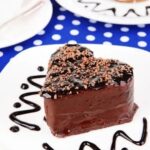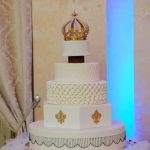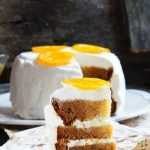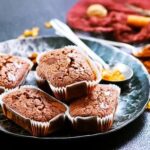Are you wondering how to decorate a cake without fondant? Fondant can be tricky to work with, and not everyone enjoys the taste. Luckily, there are plenty of alternatives for decorating a cake without using fondant. In this article, we will explore the appeal of decorating a cake without fondant and discuss various creative options for cake decoration.
Many people prefer decorating cakes without fondant because they find it too sweet or challenging to work with. As a result, they seek out other options that still allow them to create beautiful and delicious cakes. Fortunately, there are several alternatives to fondant that can be used for cake decoration, such as buttercream, cream cheese frosting, ganache, fresh fruit, chocolate, and edible glitter.
In this article, we will delve into the world of cake decoration without fondant and provide valuable tips and techniques for achieving stunning results. Whether you’re an experienced baker or just starting out, learning how to decorate a cake without fondant opens up a world of possibilities for creating visually appealing and delectable treats. So let’s discover the exciting alternatives to fondant and unleash our creativity in the kitchen.
Choosing the Right Type of Icing or Frosting
When decorating a cake without fondant, the choice of icing or frosting is crucial in achieving the desired look and taste. There are several alternatives to fondant that can be used to decorate a cake, each with its own unique texture and flavor. Here are some options for choosing the right type of icing or frosting:
- Buttercream: Buttercream is a classic choice for decorating cakes without fondant. It is smooth, creamy, and easy to work with, making it suitable for piping intricate designs or creating a smooth finish on the cake.
- Cream Cheese Frosting: Cream cheese frosting is known for its tangy flavor and soft, spreadable texture. It pairs well with a variety of cake flavors and can be tinted different colors for decorative purposes.
- Ganache: Ganache is made from chocolate and cream, resulting in a rich and glossy frosting that adds decadence to any cake. It can be poured over the cake for a smooth finish or used as a filling between layers.
Before applying any type of icing or frosting to the cake, it’s important to ensure that the cake is properly prepared. This includes leveling the top surface of the cake to create an even base for decoration and crumb-coating the cake with a thin layer of frosting to seal in any loose crumbs. This step lays the foundation for a professional-looking finished product.
Ultimately, choosing the right type of icing or frosting depends on personal preference and the intended design of the cake. Experimenting with different textures and flavors can lead to stunning results when decorating a cake without fondant.
Preparing the Cake for Decoration
Properly leveling and crumb-coating the cake is essential before beginning the decoration process. This step ensures that the cake has a smooth, even surface to work with and prevents any loose crumbs from mixing into the final layer of frosting or icing.
Leveling the Cake
Before decorating, it’s crucial to ensure that your cake layers are level. Using a long serrated knife or a cake leveler, carefully trim off any domed tops to create a flat surface. This will make it easier to stack multiple layers and will result in a more professional-looking finished product.
Crumb-Coating the Cake
After leveling the cake, it’s time to apply a thin layer of frosting or icing all over the cake to seal in any loose crumbs. This initial coating, known as a crumb coat, acts as a primer for the final layer of decoration and helps create a smooth canvas for your design. Be sure to let the crumb coat set before applying the final layer of frosting or icing for best results.
Once you have successfully leveled and crumb-coated your cake, you are ready to move on to the creative and fun part of decorating without using fondant. By taking these necessary steps, you can ensure that your cake not only looks beautiful but also tastes delicious.
Piping Techniques
When decorating a cake without fondant, piping techniques are essential for creating intricate designs and patterns that add visual appeal. Using different types of icing or frosting, such as buttercream, cream cheese frosting, or ganache, allows for versatile and creative piping options. For example, rosettes can be achieved by using a star-shaped piping tip to create beautiful swirls on the cake, while shells can be made by using a shell-shaped tip to form elegant borders or accents.
Borders are another important aspect of cake decoration using piping techniques. Simple borders can be created with round tips, adding a neat and professional finish to the edges of the cake. Alternatively, more elaborate borders can be achieved by using specialty tips that produce unique shapes and patterns. Piping techniques also enable decorators to write messages or create personalized designs on the cake without relying on fondant.
Mastering piping techniques requires practice and patience, but the results can be truly stunning. Concentrating on even pressure and steady hand movements is key to achieving clean lines and precise details when using different piping tips for decorating cakes without fondant. By mastering these techniques, decorators have unlimited potential for customizing cakes with their own artistic flair.
| Piping Techniques | Intricate Designs |
|---|---|
| Rosettes | Beautiful swirls on the cake created with star-shaped piping tip |
| Shells | Elegant borders or accents made with shell-shaped tip |
| Borders | Neat and professional finish to the edges of the cake using round tips |
Using Fresh Fruit or Flowers
When it comes to decorating a cake without fondant, incorporating fresh fruit or flowers can be a delightful and visually stunning alternative. Not only do fresh fruits and flowers add natural beauty to the cake, but they also provide bursts of color and flavor that can elevate the overall presentation. There are several creative ways to incorporate these natural elements into your cake decoration, whether you’re aiming for a rustic, bohemian look or a more polished, elegant design.
One popular technique for using fresh fruit in cake decoration is to create a colorful and vibrant fruit cascade. This involves arranging an assortment of berries, citrus slices, or tropical fruits in an artful display on top of the cake. Another option is to strategically place individual slices or pieces of fruit around the perimeter of the cake as an eye-catching border.
When working with flowers, it’s essential to ensure that they are organic and free from pesticides. Edible blossoms like roses, lavender, violets, or pansies can be gently pressed onto the surface of the cake for a whimsical and romantic touch.
In addition to their decorative appeal, fresh fruits and flowers can also serve as palate-cleansing accents that balance out the sweetness of the cake. By incorporating seasonal fruits or blooms into your cake decoration, you can create a visually stunning and uniquely personalized masterpiece that showcases natural beauty without relying on fondant.
| Advantages | Techniques |
|---|---|
| Adds natural beauty | Fruit cascade arrangement |
| Provides bursts of color and flavor | Berry border placement |
| Presents an opportunity for personalization | Gently pressing organic blossoms onto the surface |
Chocolate and Candy Decorations
When it comes to decorating a cake without fondant, chocolate and candy can be used to create stunning and eye-catching decorations. Here are some tips and tricks for using chocolate and candy to elevate the visual appeal of your cake:
- Chocolate curls: To make chocolate curls, start with a block of semi-sweet or dark chocolate. Use a vegetable peeler to carefully shave thin curls off the edge of the chocolate block. These curls can be arranged on top of the cake in an elegant swirl pattern or scattered for a more whimsical look.
- Shards: Chocolate shards are a modern and sophisticated way to decorate a cake. Simply melt chocolate and spread it evenly over a baking sheet. Once the chocolate has set but is still slightly pliable, break it into irregular pieces or shards. These shards can then be inserted into the top of the cake for a dramatic effect.
- Ganache drips: Ganache is a rich and decadent mixture of chocolate and cream that can be used to create beautiful drips down the sides of a cake. To achieve this effect, pour warm ganache over the top edge of the cake and gently nudge it over the edge to create drips that cascade down the sides.
In addition to using chocolate, incorporating candy into your cake decoration can add playful elements and pops of color. Consider using colorful sprinkles, edible pearls, or crushed candy pieces to enhance the overall look and feel of your cake.
Experimenting with different textures, flavors, and colors when using chocolate and candy decorations can result in a visually striking cake that will impress your guests without the need for fondant. With these creative ideas, you can elevate your cake decorating skills and achieve professional-looking results while avoiding fondant altogether.
Edible Glitter and Metallic Accents
Using edible glitter to add a touch of sparkle and glamour to a cake can be a great alternative to using fondant. There are various types of edible glitter available, including dusts, flakes, and even edible glitter sprays.
These glitter options can be used to create stunning effects on the cake that catch the light and add a touch of magic. From subtle shimmer to bold metallic effects, edible glitter can elevate the look of a cake without the need for fondant.
Metallic Accents:
In addition to edible glitter, metallic accents are another way to add a touch of glamour to a cake without using fondant. Edible metallic accents come in various forms, such as gold or silver leaf, edible metallic paint, or luster dusts.
These accents can be used to create elegant designs and patterns on the cake, adding a luxurious touch without the heaviness of fondant. Whether it’s creating delicate filigree work or adding hints of metallic shine to flowers and borders, these accents can take the decoration of a cake to the next level.
Tips for Using Edible Glitter and Metallic Accents:
When using edible glitter and metallic accents on a cake, it’s important to do so with precision and care. Dusting techniques should be practiced beforehand to ensure an even application of glitter or metallic finish. Additionally, handling delicate gold or silver leaf requires patience and attention to detail in order to achieve a refined result. It’s also essential to consider the overall design of the cake and choose where to strategically place these elements for maximum visual impact.
With some creativity and skillful application, edible glitter and metallic accents can transform a cake into an exquisite work of art without relying on fondant for decorative purposes. Embracing these alternatives allows for endless possibilities in creating beautiful cakes that are both visually stunning and delicious.
Final Touches and Presentation
In conclusion, decorating a cake without fondant offers a plethora of creative and visually stunning alternatives that can elevate any homemade or professionally baked cake. By exploring different types of icing or frosting, such as buttercream, cream cheese frosting, or ganache, individuals can achieve beautifully decorated cakes without the need for fondant.
Additionally, mastering piping techniques, utilizing fresh fruit or flowers, incorporating chocolate and candy decorations, and adding edible glitter or metallic accents can result in visually striking cakes that are sure to impress any audience.
When preparing a cake for decoration without fondant, it is crucial to properly level and crumb-coat the cake before beginning the decorative process. This ensures a smooth canvas for creativity and prevents any imperfections from showing through the final design. The final touches and presentation are equally important to consider when decorating a cake without fondant.
Adding a polished border, paying attention to the finer details, and presenting the cake in an appealing way can truly make the difference between a beautiful cake and an extraordinary work of art. Ultimately, with the right tools, techniques, and creativity, anyone can decorate a stunning cake without using fondant.
Frequently Asked Questions
What Can You Use Instead of Fondant on a Cake?
Instead of fondant, you can use buttercream frosting to cover a cake. Buttercream frosting provides a smooth finish and can be easily shaped and decorated. Another alternative to fondant is marzipan, which is made from almond paste and sugar. Marzipan can be rolled out and draped over a cake just like fondant.
What Can I Put on Top of Cake Besides Frosting?
Besides frosting, you can top a cake with fresh fruit such as berries, sliced peaches, or kiwi for a natural and colorful touch. Whipped cream or whipped coconut cream can also be used to add a light and fluffy topping to the cake. For a decadent option, consider adding chocolate ganache drizzle or caramel sauce on top of the cake.
Can You Use Icing Instead of Fondant?
Yes, you can use icing instead of fondant to cover a cake. While fondant provides a smooth and firm finish, icing such as royal icing or glaze icing can also be used to cover and decorate cakes.
Royal icing dries hard and is often used for intricate designs, while glaze icing creates a shiny finish on the cake’s surface. Both options offer different textures and decorative possibilities compared to fondant.

Welcome to my blog about home and family. This blog is a place where I will share my thoughts, ideas, and experiences related to these important topics. I am a stay-at-home mom with two young children. I hope you enjoy reading it! and may find some helpful tips and ideas that will make your home and family life even better!





